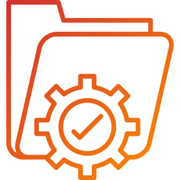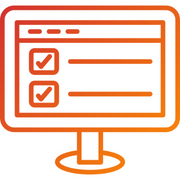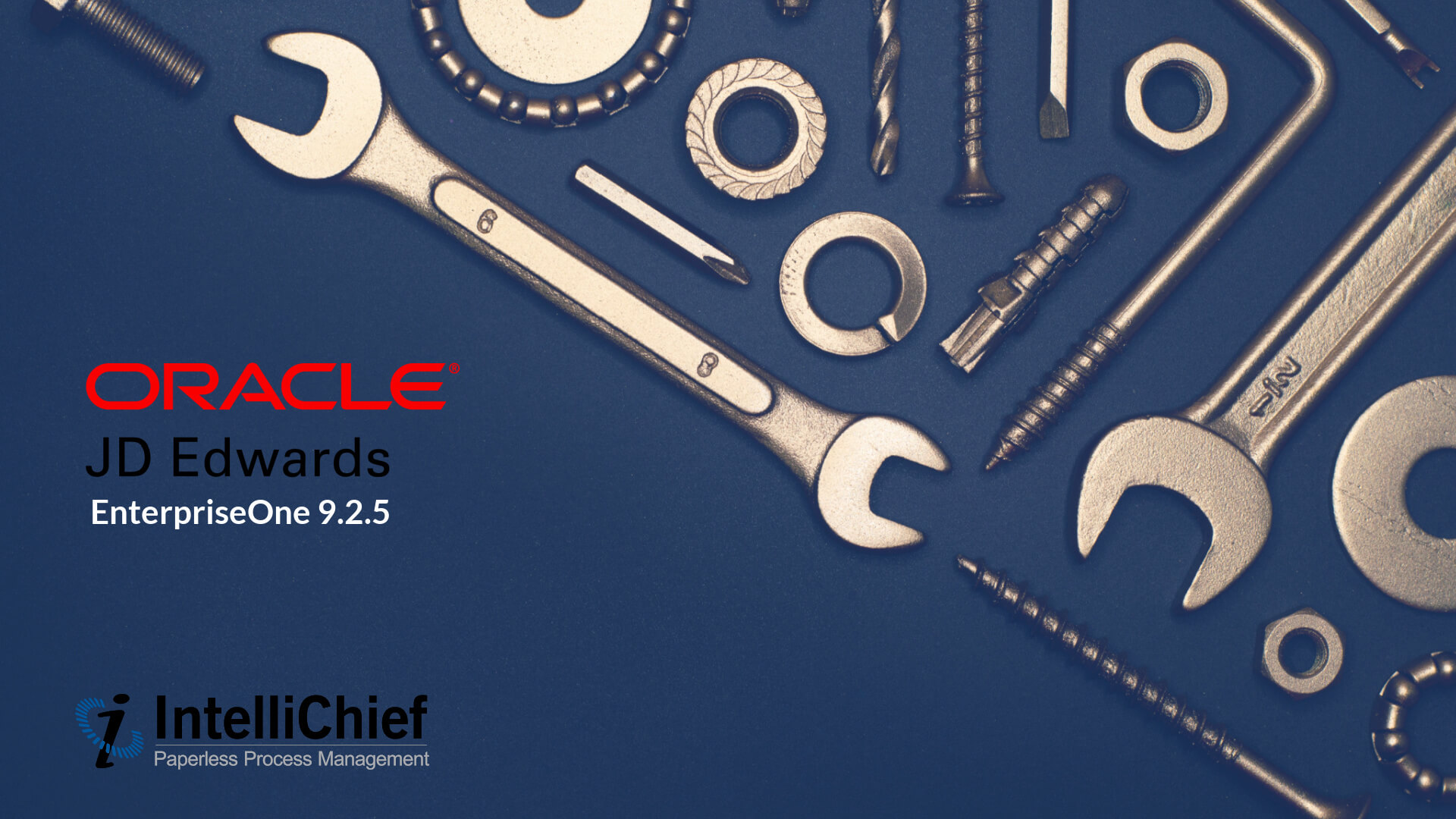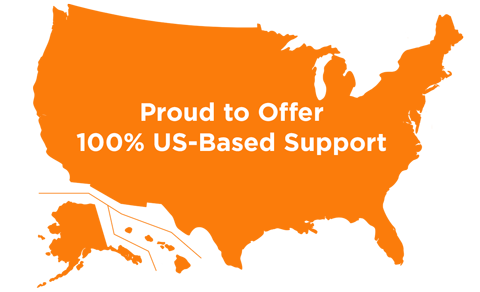The decision to partner with a software provider for Accounts Payable Automation can be a complicated one. Your organization is looking to solve problems in Accounts Payable, but conveying those issues to a vendor can be difficult. It can feel like your ideas are too abstract to explain in concrete terms or you lack the necessary knowledge to start your search on the right path. Not to mention, the wrong choice can turn your investment into more of a gamble than you might care to admit.
If your accounting department has plateaued in terms of productivity, partnering with a vendor that can offer best-in-class AP Automation can help you turn a common cost center into a source of savings — both in terms of productivity and your bottom line. The trouble is, with so many vendors offering so many different products, it can be difficult to trust that the one you’re being pitched is the best fit for your organization’s specific needs.
This article discusses 10 vital questions to reference when vetting Accounts Payable Automation solution providers, including:
-
What Are Some Unexpected Invoice Processing Issues Our Organization Has Faced?
-
What Do You Know About Our Business and Industry?
-
Does the Accounts Payable Automation Solution Integrate With Our Current Technology?
-
How Do You Plan to Address Our Specific Needs and Communicate Results?
-
Will We Have to Change the Way We Process Invoices?
-
Does Your Solution Put Style Over Substance?
-
How Does Your Strategic Approach Align With Our ROI Goals?
-
Will We Be Included in the Implementation Process?
-
Can We Speak to One of Your Customers About Their Results?
-
How Will You Demonstrate a Successful Accounts Payable Automation Project?
These questions will help you gauge the possible benefits and drawbacks of any AP Automation partnership. By the time you’re done browsing these 10 important questions, you will have all of the information you need to perform your due diligence when shopping AP Automation solutions.
1. What Are Some Unexpected Invoice Processing Issues Our Organization Has Faced?
This is the big one. The productivity of your Accounts Payable department is entirely dependent on your team’s ability to swiftly process invoices as they arrive. When an invoice can be matched to its corresponding purchase order, the biggest slowdown is typically the manual data entry required to key that information into your Enterprise Resource Planning (ERP) system.
Unfortunately, for larger companies with dozens or even hundreds of vendors, it’s far easier for Accounts Payable to become inundated with exceptions that require one of your end-users to manually verify information that extends beyond what is indicated on the PO. For example:
- How do you handle a duplicate invoice?
- How do you ensure that you’re taking advantage of as many early payment discounts as possible?
- What steps must be taken to resolve a pricing discrepancy?
- How do you verify that items on the invoice match the PO when they have different units of measure?
- How do you account for special charges that are added after an invoice is received?
In a manual AP department, these questions are often left unanswered; after all, simply managing the volume of invoices entering your organization can be a tall order in itself. Or worse, each of your end-users has developed their own strategy for dealing with these exceptions, resulting in a lack of process standardization across the enterprise. Your chosen Accounts Payable Automation solution should have enough advanced features to automate AP beyond simply verifying that an invoice matches a PO. Detail these specific challenges to any vendor your organization is engaging with and verify that their solution can in fact handle these specific circumstances. Don’t be shy. Request a demo to see for yourself.
2. What Do You Know About Our Business and Industry?
Accounts Payable Automation is not a one-size-fits-all solution. Automation runs the gamut from point solutions for small businesses dealing with one specific AP problem to Enterprise Content Management (ECM) systems that employ a variety of technologies to digitally transform Accounts Payable into a fully automated, 100 percent paperless department. But the size and scope of your operations aren’t the only things to consider when vetting AP Automation solutions. You want to find a vendor that has already deployed AP Automation for other companies in your industry. These vendors will have a particularly fine-tuned sense of what you need to accomplish as well as the steps to get you there.
Familiarity with industry norms, standards, and regulations is becoming increasingly important as regulatory compliance continues to push businesses to improve information security. Whether your company deals with SOX, HIPPA, or some other regulatory body, a vendor that knows your industry will understand your pain points and actively work to meet your requirements.
3. Does the Accounts Payable Automation Solution Integrate With Our Current Technology?
Integration is the crux of successful Accounts Payable Automation implementations. AP Automation isn’t just a piece of software you upload to your computer. It must be integrated with your existing technology, such as your ERP system or any other system of record you utilize to run your business. It needs to be able to access and affect this information; otherwise, your solution will be hamstrung from the beginning.
In the last section, we mentioned that familiarity with your business and industry is important to ensure a successful AP Automation partnership; however, integration with your core technologies is equally as important (if not more so). You don’t want an inexperienced company mucking up your ERP or trying to replicate their success with one ERP by following the same procedures they always do with a system they aren’t accustomed to. Look for a vendor who is certified to work with your current ERP or can provide evidence of past project successes to show you exactly how your AP Automation project will be approached. Integration is key to getting the most bang for your buck. If you want “real” automation that doesn’t get stumped on simple exceptions, you need seamless integration that can provide real-time updates to your ERP tables.
4. How Do You Plan to Address Our Specific Needs and Communicate Results?
Do you want to ensure that your Accounts Payable Automation project is successful? When speaking with vendors, detail your specific needs and requirements but don’t forget to follow up with them to see how they plan to address these concerns. Furthermore, remain steadfast in your pursuit of measurable results. You can’t track what you can’t measure, and any AP Automation solution worth its salt will be able to provide you with data to verify that you’re meeting important KPIs, such as:
- The overall cost per invoice processed
- Number of invoices processed straight-through (touchless) per day versus manually processed invoices
- The average percent of invoice exceptions
- Average time per invoice processed
- Reduction in received not vouchered invoices
You’ll only be selling your organization short by solely looking for a reduction in costs. Accounts Payable Automation can help you achieve so much more — as long as your vendor works with you to establish a plan from the beginning. Any vendor simply looking to sell you a product is not going to help you utilize AP Automation to the fullest extent possible.
5. Will We Have to Change the Way We Process Invoices?
Let’s face it, there are going to be some changes to your process flow when implementing AP Automation; however, these changes should only serve to benefit your team and help make their jobs easier. Understandably, businesses are reticent to alter workflows that have served them reliably for years, but keep in mind that reliability doesn’t equate to cheap or fast. Therefore, when asking this question; don’t be afraid to be told that, yes, you will have to change the way you process invoices. The important thing is to ask “how” your workflows will be changed. There’s a very good chance that you will like what you hear.
Now, here’s what you should look out for. If a company doesn’t offer a tool for designing, editing, revising, fixing, or eliminating workflows in accordance with your business needs, it’s probably not going to be a long-term, viable solution. You only want to eliminate steps in your process that hinder your bottom line, such as:
- Manual data entry
- Searching for files in a filing cabinet
- Printing, scanning, copying, etc.
- Manually verifying invoice matches
- Manually performing 2-, 3-, and 4-way matches
There’s no point in fixing what isn’t broken, but many vendors are limited by the solution they are selling. This is another reason why a strategic partner is far more valuable than a standalone product; a strategic partner will align their technology with your existing processes to help your project launch quickly and efficiently while limiting the learning curve for your team.
6. Does Your Solution Put Style Over Substance?
When it comes to AP Automation, no amount of surface sheen can overcome a solution with limited capabilities. During your due diligence, it’s important to focus on function over form. Clean interfaces, bright buttons, and attractive analytics dashboards are superficial if they don’t serve your overall automation goals — or exist solely to masquerade a lack of functionality. This isn’t a question you should pose directly to a vendor, but it’s one that should be considered internally (at all times) as you perform your due diligence. When digging for the truth about the functional capabilities of an AP Automation solution, “can” questions are important, for example:
- Can your solution automate invoices with multiple lines or pages?
- Can your solution resolve exceptions automatically by scanning multiple database tables and performing complex functions?
- Can your solution integrate with all of my core technologies to boost overall performance?
- Can your solution solve my company’s specific problems?
- Can you prove that your solution does all that you claim? Or does it simply “look” like it’s up to the job.
With so many AP Automation solutions available on the market today, it has become imperative for businesses to focus on function. Allowing yourself to be led astray by a solution that looks great and claims to have all the bells and whistles you need could result in major disappointment if your requirements aren’t actually met by the time your solution is deployed.
7. How Does Your Strategic Approach Align With Our ROI Goals?
There are countless vendors to choose from, all of which are vying for your valued partnership. When it comes to Accounts Payable Automation, one of the greatest differentiators is the strategy being proposed to help you meet your ROI goals. As you perform your due diligence, you may find that some vendors are eager to throw around jargon while providing scant evidence of a cohesive, strategic plan. If you find yourself in this position, it’s a good idea to take a step back and re-evaluate whether that particular vendor is the right fit. In most cases, the vendor that speaks plainly and is straightforward when detailing their strategic plan is the vendor you want to select.
Remember, your company is seeking a solution that will help them cut costs, save time, reallocate resources, and improve business for everyone — not a solution that relies on confusing technobabble to circumvent your real concerns.
8. Will We Be Included in the Implementation Process?
You might believe that signing an AP Automation partner means your portion of the work is done, but that’s far from reality. Your AP Automation vendor needs to be your strategic partner. They need to work directly with Accounting, IT, and the C-suite to ensure that every nook and cranny of your business processes are explored thoroughly, mapped accurately, and tested to perfection. This is only possible by working together throughout the implementation process. This doesn’t just give you an opportunity to oversee the implementation, it gives you time to connect with your vendor’s representatives, ask questions, and keep the ball rolling in the right direction.
There will be hiccups; every AP Automation project is confronted with unexpected challenges, but together, these challenges can be overcome. Don’t be shy. Press every vendor about your role in the implementation process. The more involved they allow you to be, the more assurance you have that your implementation is headed for success. To avoid potential concerns, ask vendors how they are going to manage communication and collaboration and what degree of your involvement they expect to have.
9. Can We Speak to One of Your Customers About Their Results?
As we mentioned previously, any vendor that has worked with a company with a similar profile to yours will be more likely to meet your goals and requirements. It might feel like a bit of an overreach, but if they are willing to connect you with one of their existing customers, you should take advantage of the opportunity. Don’t be afraid to ask. This might not be a common practice for every vendor, but it is certainly a common practice for vendors that strongly believe in their products and services.
Typically, other companies that have experienced AP Automation success will be eager to share their stories and assist their vendor. Why? Because these customers understand the value of a strategic partnership that extends beyond a simple software sale. Sometimes, it’s better to speak directly to a customer to see how a vendor succeeded — or how they failed.
10. How Will You Demonstrate a Successful Accounts Payable Automation Project?
You’ve purchased and implemented a solution, but after 90 days, you’re not saving time or money. In fact, your AP team is more confused than ever. They can’t find what they’re looking for. Database searches yield zero results. Invoices continue to pour in but you’ve changed your workflow to align with a system that only causes you more trouble. At this point, your only question is:
What went wrong?
To avoid a crisis like the one described above, it’s important to establish clearly defined milestones to show evidence of the progress being made. By the time your solution hits “go-live,” you should already have all the data you need to justify your decision to automate Accounts Payable. Ask your vendor if they will use real data or models during the implementation phase, and don’t be afraid to set strict 30/60/90-day milestones to ensure that your system is getting faster and more accurate. If your chosen vendor can’t provide evidence of ROI before you go-live, they might not be the right vendor for you.
Successful Accounts Payable Automation Starts With a Strategic Partnership
Are you ready to automate Accounts Payable to cut costs, save time, improve visibility, preserve supplier relationships, and increase your bottom line? You can’t do it alone, but you can transform your business by aligning your organization with the right strategic partner for Accounts Payable Automation.
Together, you and your strategic partner will build a business case for AP Automation that will “wow” leadership, provide clear evidence of ROI, and present a comprehensive plan that accounts for every minute detail of your business processes. If you can find a solution that can be expanded to other departments, like Accounts Receivable, Human Resources, Customer Service, and more, you can squeeze even more value out of your solution without muddying your technology with various point solutions. You might even find that your best friend on the job is your strategic partner.
To learn more about IntelliChief and our successful Accounts Payable Automation projects over the last 10+ years, contact us today.











